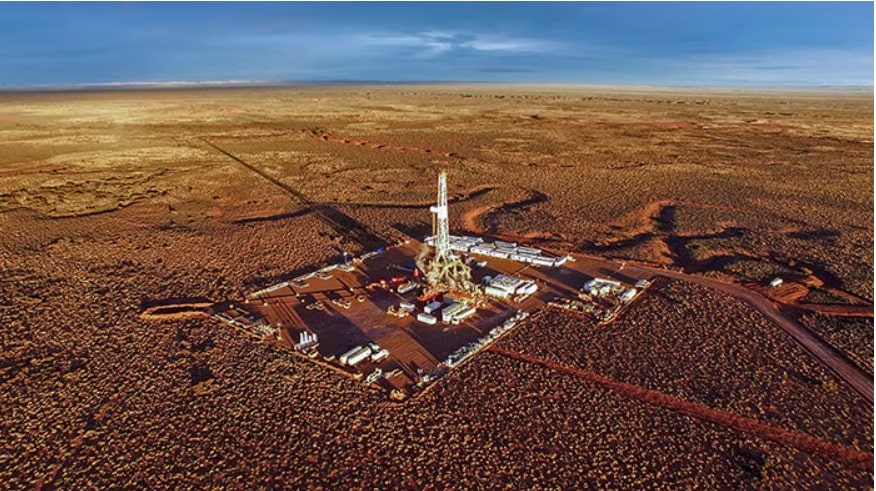Navigating the Future: Ultrasonic flow measurements in flare installations
In today's highly competitive process industry, continuous optimization of operations and service work is crucial. Moreover, as environmental regulations pertaining to flaring become increasingly stringent, it becomes imperative to employ reliable and efficient flow measurement solutions. For over 30 years, ultrasonic flow meters have been utilized to measure flow to flare stacks. However, flare flow measurement remains one of the most challenging applications due to the rapid changes in velocities and gas compositions.
Flare stacks are integral to the safety and waste gas systems of various industries, allowing controlled venting of large volumes of combustible components during upset conditions. Given their nature, the pressure, volume flow, and composition of flare gases can undergo significant fluctuations within short periods of time.
With the emergence of compact and optimized production facilities boasting higher capacities, maximum flow conditions over the flare have reached unprecedented levels. Shutdown conditions in refineries and petrochemical plants have recorded flow rates exceeding 120 m/s.
The composition of waste or flare gas can vary widely, and abrupt changes in flow conditions should be expected. Additionally, low flow conditions have gained significance for process control, optimization, and identifying valve leakage during normal operational conditions. Ensuring precise time measurement in the presence of minimum flow rates necessitates high-resolution transducer technology and advanced signal processing algorithms. Furthermore, the installation of valves or other components before acoustic ultrasonic measurements can introduce soaring noise within the flowing gas, particularly at high flow velocities. Consequently, even the drift of the "ultrasonic beam" must be considered.
An Evolving Regulatory Environment:
Across various industries worldwide, environmental regulations are becoming increasingly stringent. While the ultrasonic technology has already been established for many years in the refining, chemical, and petrochemical sectors, the rise in regulatory pressure and reporting requirements is now demanding enhanced reliability in flare measurement and data availability, even under challenging conditions. Although regulations for the refining, chemical, and petrochemical industry are already defined, other industries are proactively seeking technical solutions to meet future environmental regulations. In terms of reporting, ultrasonic technology offers numerous advantages over alternative methods, further reinforcing its appeal in achieving compliance.
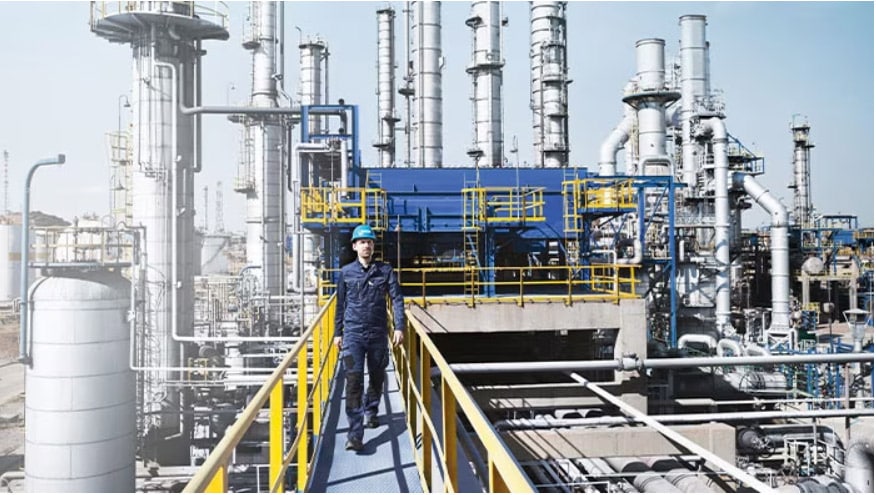
Challenges in Flare Measurement and Technological Solutions
Ultrasonic flow metering is a widely adopted technology in fluid metering, serving a range of applications from custody transfer metering to flare flow measurement and emission control. The fundamental principle behind ultrasonic flow meters involves measuring the transit time difference of the flowing fluid along an acoustic path, allowing for the determination of the mean flow velocity across the pipe cross-section.
Accurate measurement of greenhouse gas (GHG) emissions is a key objective in flare flow measurement. In recent years, the focus on precise GHG measurement has intensified due to increasing fees and taxes on air pollution. Consequently, the demand for accurate and readily available measurement solutions has surged. However, the unique challenges posed by difficult flare gas conditions in the oil and gas, chemical, and petrochemical industries require innovative technological solutions, including:
- Gas velocities ranging from 0 m/s to 120 m/s
- Rapid fluctuations in gas velocity
- Dynamic changes in gas composition, encompassing natural gas, hydrogen, carbon dioxide, and more.
Active Sound Correlation: Reliability at High Gas Velocities
Ensuring measurement reliability, even under the highest gas velocities, stands as a critical characteristic of a flare measurement system. The introduction of the groundbreaking ASC-technology (active sound correlation technology) extends the maximum flow range by up to 30%. ASC employs the correlation of gas velocity with application-specific noise generated during high flow conditions, functioning akin to a microphone. This patented technology enhances coverage of potential flare gas events, further bolstering system performance.
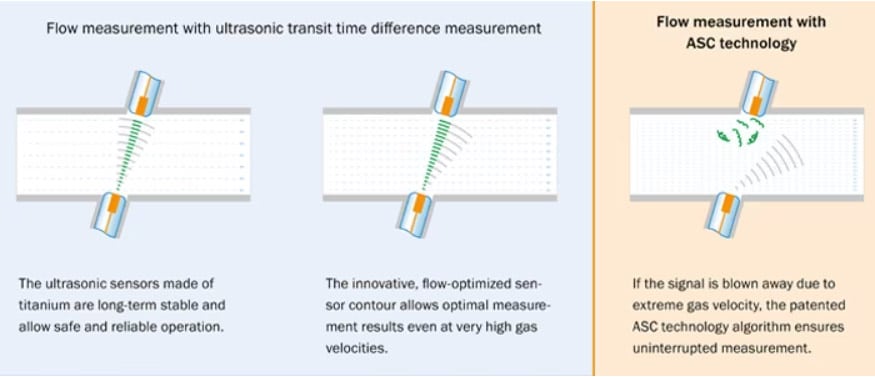
Streamlined Maintenance, One-Click Verification, and Self-Diagnostics
The integration of software and firmware unlocks a plethora of new functions and benefits. Self-monitoring systems provide invaluable data on device status, revealing trends and highlighting relevant changes. Any application faults are promptly detected and documented, significantly reducing troubleshooting time. Moreover, the system can be self-verified, generating comprehensive reports that aid in demonstrating compliance with emission regulations. These capabilities can be accessed remotely, eliminating the need to dispatch service technicians to the field, thereby minimizing operational and safety risks.
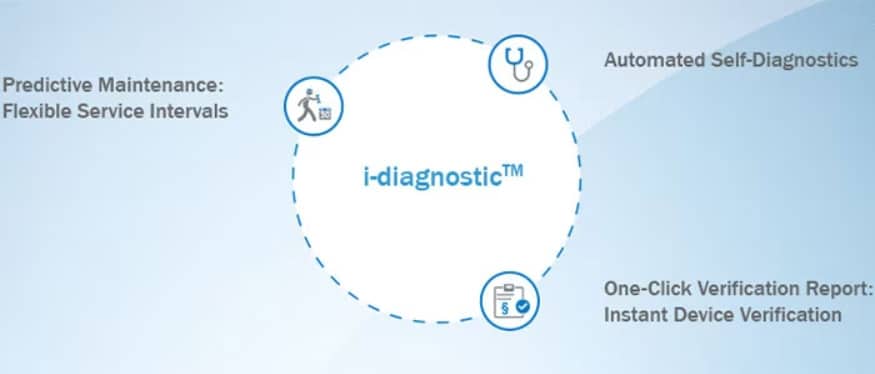
Predictive Maintenance and Flexible Service Intervals
Constant monitoring of parameters such as "automatic gain control" and "signal-to-noise ratio" enables i-diagnostics™ to deliver accurate predictions and maintenance recommendations based on historical data and measured value trends. By avoiding system-critical operating conditions, unplanned downtimes are effectively prevented, leading to reduced maintenance costs and increased operational efficiency.
One-Click Verification Report: Instant Device Verification
Upon request, the system conducts self-checks and logs its current status, empowering users to effortlessly generate verification documents as evidence of meeting emission requirements.
Automatic Self-Diagnostics
i-diagnostics™ intelligently links software and firmware, enabling the self-monitoring system to provide valuable real-time data on device status and highlight any changes. Any application errors are immediately identified and documented, eliminating the need for time-consuming troubleshooting.
The right solution for every challenge
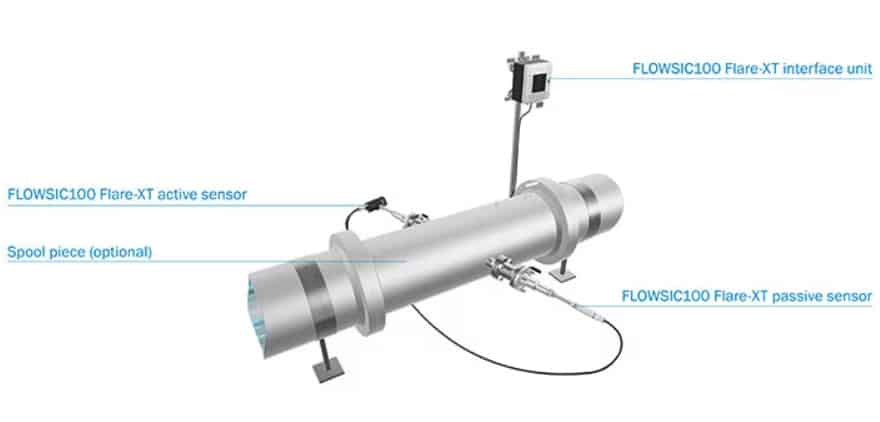
Flare gas meters with ultrasonic technology offer versatile solutions for various applications with unique demands. Deep knowledge of the individual challenges is crucial to provide the right solution. In the refinery industry, compliance with US EPA regulations is essential. These regulations mandate specific requirements, such as a minimum combustion zone heating value of 270 BTU/scf and a net heating value dilution parameter of NHVdil ≥ 22 BTU/ft2 for steam-assisted flares. Maintaining high combustion efficiency is also a priority. Ultrasonic gas flow meters can be utilized to control the steam supply and meet these stringent requirements effectively.
The FLOWSIC100 Flare-XT flare gas meter is available in three different versions to accommodate diverse needs. All versions can be configured as a 1- or 2-path measurement system. Crossduct installation and single nozzle probe systems are available for both path configurations. The probe version is particularly suitable for compact, one-sided fitting, minimizing the required installation work. The 2-path version ensures high measurement accuracy even under challenging flow conditions and provides measurement redundancy. Furthermore, the device-retraction mechanism enables simple and quick sensor replacement during plant operation. The powerful interface unit seamlessly connects to various systems and networks, thanks to its numerous interfaces.
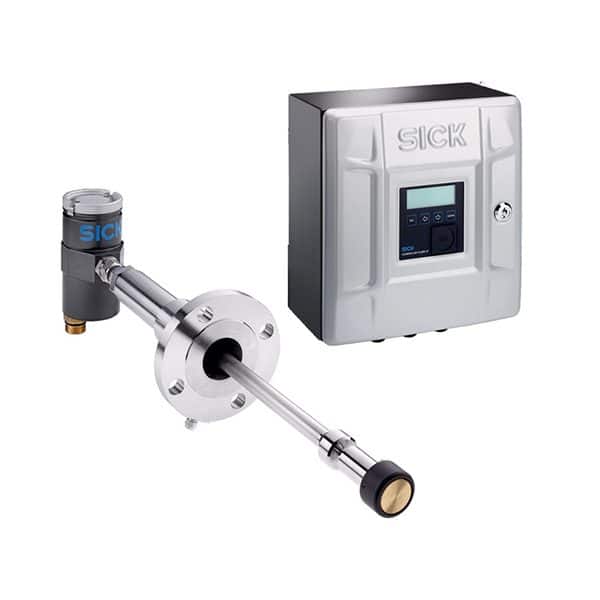
Reliable gas flow measurement on flare stacks in petroleum refineries, chemical plants and natural gas processing with SICK ultrasonic gas flow meters.
The interface unit plays a vital role in the flare gas meter system. It processes incoming signals and performs calculations for parameters such as molecular weight, mass flow, gas volume, and standardized reference values. With an infrared interface, the system can be intuitively operated from a laptop or tablet using the user-friendly FLOWgate™ software. Integrated Ethernet and RS-485 interfaces allow remote monitoring of the device status.
Key parameters and measured value data, including volume flow, mass flow, and molecular weight, undergo reliable processing, evaluation, and storage. The internal memory ensures secure and structured data archiving. This capability enables permanent data storage for future reference. The interface unit facilitates interference-free digital communication, enabling its installation up to 1,000 meters away from the measuring point. As a result, there is no longer a need for a local, pressure encapsulated, and potentially expensive control unit.
Thermal Mass Measurement Replacement
Some measurement principles, like thermal mass measurement, need clean gas to operate correctly. Ultrasonic technology can overcome fouling or contamination on the sensors by automatically boosting the signal. This optimizes maintenance intervals, maximizes measurement uptime, and reduces operating costs. Additionally, ultrasonic flare gas measurement is the only technology that can operate in a measuring span of up to 1:4000. There is no need to focus on a high or low flow condition as measurement speeds of 0.03 m/s to 120 m/s are possible.
For the demands in upstream, for example, in fracking applications, Westech Industrial offers the FLOWSIC100 Flare-XT Transmitter – reliable and rugged without recalibration. The sensors are directly connected to an already existing flow computer. The interface unit is not needed in this product configuration, and neither pressure nor temperature transmitters are necessary.
Individual Application Evaluation
In flare flow measurement, each application is different: temperature, pressure, gas matrix, velocity, etc., can vary significantly. This is why Westech Industrial offers an individual application evaluation for each measuring point and seeks out the optimal solution. After the evaluation, a Flare gas application evaluation data sheet for each measurement point is provided to the customer.
To learn more about the FLOWSIC100 Flare-XT flare gas meter and how it can meet your specific requirements, visit Westech Industrial's website or call us today at 1-800-775-6129.
